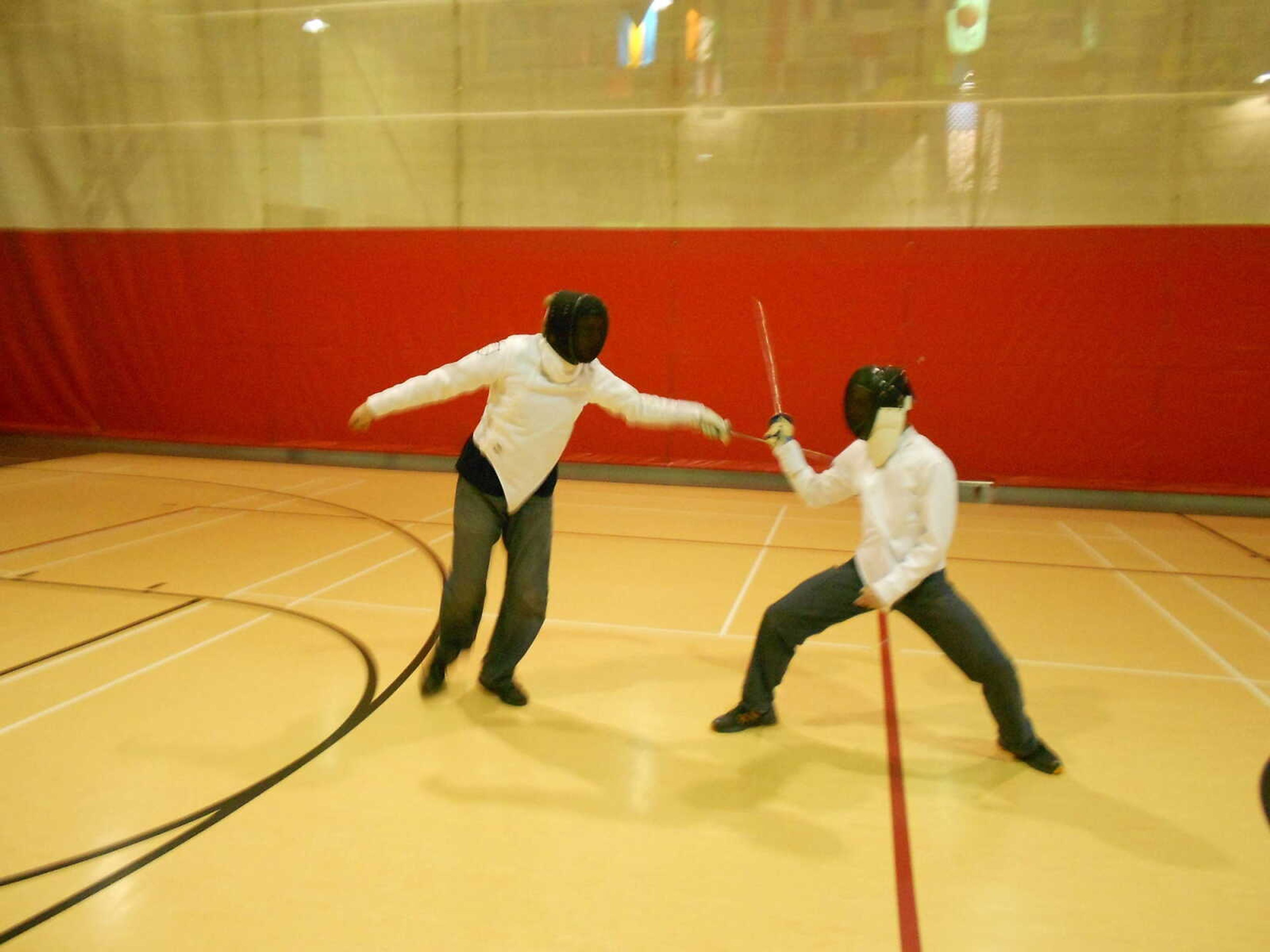Fencing is a sport that pits two combatants against each other, testing their strengths and weaknesses in strategy, reflexes and martial arts at the end of a blade.
The Southeast Missouri State University fencing club is hosting a tournament at 9 a.m. March 24 at the Student Recreation Center-North. The competition is an invitational contest that includes fencers from schools around the Midwest and will be the club's second major tournament this year.
"We've expanded just this year," club president David Debowey said. "Normally we only do one tournament, but now we've done two."
The addition of a second tournament is due to a growing interest in fencing from other universities, according to Debowey.
In addition to hosting tournaments, the club competes in two to four competitions at other universities throughout the year. Southeast's fencing club typically places well at these tournaments, but lately hasn't been able to travel to as many as it would like due to distance.
"When we show up, we do well," Debowey said. "We usually medal in every tournament."
The fencing club is free to join and provides its members with equipment and training at the hands of the club's adviser, Jim Phillips. Phillips is the curator of the Rosemary Berkel and Harry L. Crisp II Museum at the River Campus and has more than 22 years of experience in fencing. He helps inexperienced members improve their skills and strategy in the sport.
"It's a very simple sport to pick up the basics, but takes about two lifetimes to master," Phillips said. "It's not just a physical sport, it's a mental sport. It's a lot like playing chess. You have to play your strengths and weaknesses against your opponent in a split-second moment."
For their first semester in the club, new members are taught to use the standard foil, the basic fencing sword. At the end of that first semester new members participate in a small tournament as a graduation ceremony.
"It's more for fun, and, if they haven't fenced in a tournament yet, it gives them a feel of what it's like," Debowey said.
In their second semester, the club members can choose another weapon to train with, either the Épée or saber. Each weapon has its own strengths and weaknesses in addition to different rules to follow.
Since the club is free to join, members are encouraged to purchase their own equipment if they decide to continue with the sport. This helps the club allocate its money where it is needed most.
Most of the fencing club's equipment costs are paid for with money made at tournaments. Visiting fencers will pay $5-10 to participate, depending on how much experience they've had. The club also receives money from Southeast's Student Government Association, which is mostly used to repair broken swords, electrical scoring equipment and protective gear.
"Eventually we do have to replace broken blades and electrical gear," Debowey said. "Occasionally we have to replace one of the bigger items like masks or jackets."
While fencing is a one-on-one sport, Debowey said that the camaraderie and practicing with a team helps individual fencers.
"Working more with the club as a leader has made me see more of the team side of fencing," Debowey said. "When you go to a competition, you can see in how working with the team has affected their [the club members'] individual success."








